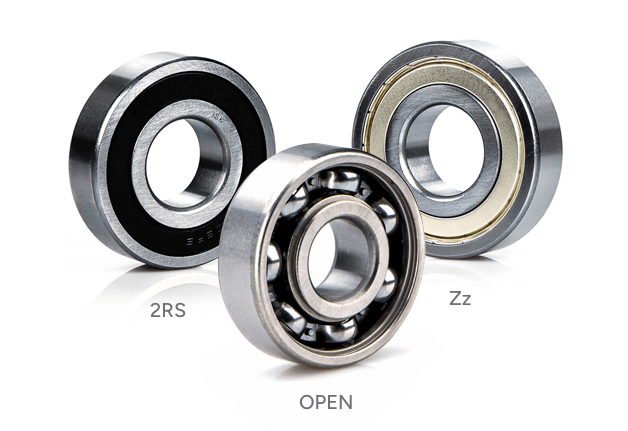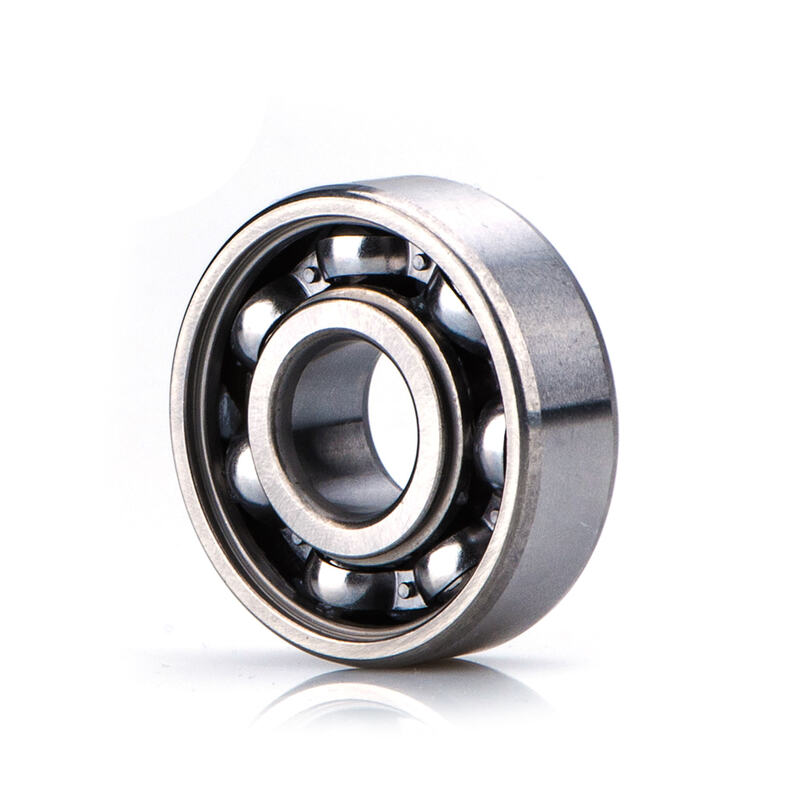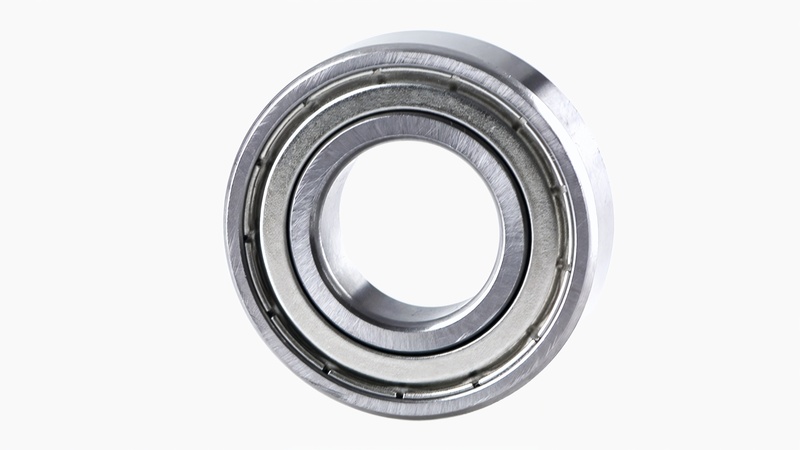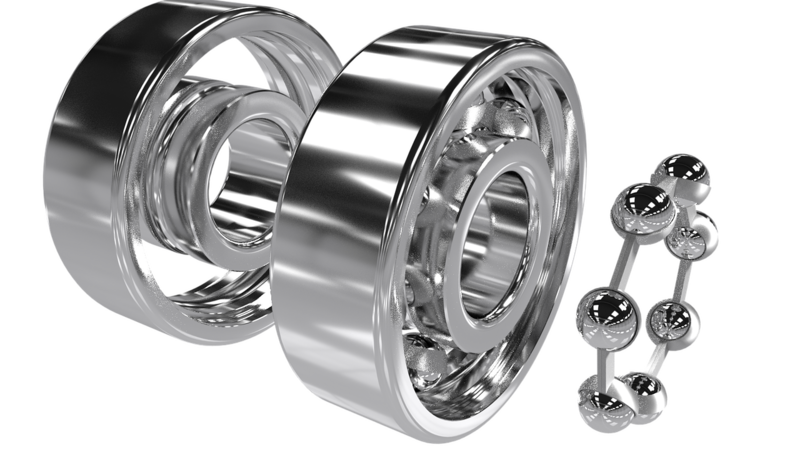Need Support?
Please provide your question. We’ll find you with the best support options.
ISK Bearings | B2B Bearing Wholesale

Bearing steel, typically High Carbon Chromium Steel like GCr15/AISI 52100, is the preferred material for manufacturing high-performance, high-quality bearings due to its exceptional reliability. Its core characteristics include high hardness (HRC60+), high wear resistance, high fatigue strength, and stable dimensional accuracy. These properties enable it to withstand high loads and high-speed operation in modern industrial equipment.

Bearing steel is a type of high carbon chromium steel, typically known for its high hardness and wear resistance. The most common type of bearing steel is AISI 52100, which is a high carbon chromium alloy steel containing around 1% carbon and 1.5% chromium. Additionally, bearing steel may include trace amounts of silicon, manganese, nickel, and molybdenum to further enhance its performance.

The high hardness of bearing steel enables it to withstand wear during high load and high-speed operation. With proper heat treatment, the hardness of bearing steel can reach above HRC60, allowing the bearing to maintain a long service life even in harsh operating environments.

Due to the presence of chromium, bearing steel forms a robust layer of chromium oxide on its surface. This protective layer gives bearing steel excellent wear resistance, effectively resisting wear and corrosion.

Bearing steel has high fatigue strength, allowing it to withstand prolonged repeated loads without suffering fatigue damage. This characteristic enables bearings to operate for extended periods under high-speed and high-load conditions.

Bearing steel can maintain extremely high dimensional accuracy after machining and heat treatment, which is crucial for manufacturing precision bearings. Precise dimensions and tolerances ensure smooth operation and long lifespan of bearings.
Secrets to Extending Bearing Life 
| Materials | Characteristics | Advantages | Disadvantages |
|---|---|---|---|
|
Bearing Steel |
High hardness, high wear resistance, high fatigue strength, stable dimensional accuracy | High load and high-speed operation resistance, long lifespan | Poor performance in certain corrosive environments |
| Extremely high hardness and wear resistance, lightweight, capable of operating in very high temperatures and corrosive environments | Lower friction at high speeds, unaffected by electromagnetic interference | Brittle, prone to fracture, higher cost | |
| Good corrosion resistance and heat resistance | Suitable for humid or corrosive environments, widely used in marine, food processing, and chemical industries | Hardness and wear resistance are not as good as bearing steel | |
| Lightweight, corrosion-resistant, self-lubricating | Suitable for low-load and low-speed applications, can be used in humid or corrosive environments | Hardness and wear resistance are not as good as bearing steel, cannot provide the same performance in high-load and high-speed applications | |
|
Bronze Materials |
Good wear resistance and friction reduction, suitable for moderate load and speed operation | Can withstand repeated vibrations and impacts, commonly used in construction machinery and mining equipment | Lower hardness and wear resistance compared to bearing steel, requires regular lubrication |
Bearing steel, as a critical material for manufacturing high-performance bearings, relies on its high hardness, wear resistance, fatigue strength, and stable dimensional accuracy to play an irreplaceable role in modern industry. With ongoing technological advancements, the performance of bearing steel will continue to improve, providing even more reliable assurance for the efficient operation and long lifespan of various types of machinery and equipment.
Bearing steel is a material specifically used for manufacturing bearings, and its excellent performance makes it widely applicable across various industrial applications. Here are several common types of bearing steel, along with their characteristics and uses:
High carbon chromium bearing steel is one of the most common types of bearing steels, with a representative grade being GCr15 (equivalent to SAE52100 in the United States). Its primary chemical composition includes carbon 0.95-1.05%, manganese 0.25-0.45%, and silicon 0.15-0.35%.
After quenching and tempering, GCr15 steel exhibits high and uniform hardness, good wear resistance, and excellent fatigue resistance. The steel has moderate cold work plasticity, average cutting performance, poor weldability, sensitivity to formation of white spots, and susceptibility to temper brittleness.
| Bearing Steel Grades | Characteristics |
|---|---|
| GCr6 | Low chromium bearing steel has better machinability, higher wear resistance than carbon tool steel, and minimal dimensional changes during heat treatment. |
| GCr9 | It has higher wear resistance and hardenability compared to GCr6, good machinability, and is suitable for making steel balls with diameters ranging from 13.5 to 25.4 mm and various rollers. |
| GCr15 | The most commonly used high chromium bearing steel, superior wear resistance to GCr9, high contact fatigue strength, good dimensional stability, and corrosion resistance. |
| GCr15SiMn | It has higher wear resistance and hardenability compared to GCr15, suitable for manufacturing sleeve rings and other high-hardness, high-wear-resistant mechanical parts with wall thicknesses greater than 12mm. |
 Learn More:
Learn More:
Ceramic Bearings vs Steel Bearings
Chrome Steel vs. Stainless Steel Bearings
Bearing model numbers consist of three parts:
We previously helped an electromechanical equipment manufacturer in Asia resolve abnormal bearing noise issues. By optimizing the sealing structure and adjusting lubrication parameters, we significantly improved system stability and reduced maintenance costs.
Case reference: ISK BEARING Customer Cases
We offer a range of testing and technical services, including independent heat treatment, automated noise & vibration testing, clearance inspection, salt spray testing, and more — helping our clients improve product reliability and performance.
Resource overview: ISK Technical Resources
You can visit the ISK official FAQ section to explore answers related to bearing selection, product specifications, and more.
FAQ Section: ISK Bearings FAQ Center
Discover more about the features and applications of various bearings.
Click here to explore more articles and find the perfect bearing for your project.
Needle Bearings (Roller Bearings) are a type of bearing that performs exceptionally well at high speeds. Their rollers are precisely guided by specially shaped, high-rigidity cages with minimal dimensional error. Despite their small cross-section, needle bearings...
How Do Ball Bearings Work? Bearings are often small and unassuming components in a product, yet they are crucial for its proper functioning. Without bearings, many products would fail to operate effectively. But do you know how ball bearings...
Please provide your question. We’ll find you with the best support options.